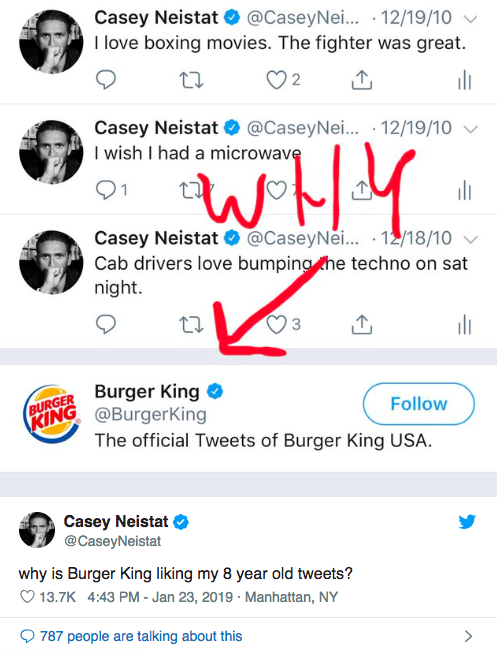It was all part of the restaurant chain’s latest social media marketing campaign to announce the return of a throwback menu item: funnel cake fries. Mystery (and Even Confusion) Can Create Buzz In this case, all it took to create buzz was enough confusion to spark curiosity. Once influencers found out Burger King was “liking” their old tweets, they took to social media to talk about it. But back to creating confusion. Influencers took to social media to see if Burger King was had skimmed anyone else’s old tweets. Some, like YouTuber Casey Neistat, even tweeted out to their large followings about it, unknowingly helping to promote the campaign. There’s Benefit to Keeping Things Really, Really Simple All the hype around Burger King was created by a relatively straightforward campaign. Burger King identified influencers to target and engaged with their tweets. The reveal itself was a simple tweet: By keeping things simple, Burger King kept the buzz focused. Plus, by liking people’s old posts, it had the internet trying to solve the big mystery.
A handful of social media influencers recently noticed that Burger King’s official Twitter account was liking their old tweets. And not just tweets from a few weeks ago—really old ones from 2010.
It turns out it wasn’t a coincidence Burger King’s “liking” spree targeted tweets from 2010. It was all part of the restaurant chain’s latest social media marketing campaign to announce the return of a throwback menu item: funnel cake fries. Burger King introduced the fries, you guessed it, back in 2010.
So what can brands learn from Burger King’s latest social media stunt?
Mystery (and Even Confusion) Can Create Buzz
In this case, all it took to create buzz was enough confusion to spark curiosity. Once influencers found out Burger King was “liking” their old tweets, they took to social media to talk about it. Burger King then began following influencers that took the bait, presumably to begin relationships that extend beyond the campaign.
But back to creating confusion. Influencers took to social media to see if Burger King was had skimmed anyone else’s old tweets. Some, like YouTuber Casey Neistat, even tweeted out to their large followings about it, unknowingly helping to promote the campaign.
Neistat’s own tweet generated nearly 500 comments, 290 retweets, and 14,000 “likes.” This engagement extended the reach of Burger King’s campaign and added fuel to the story’s fire.

There’s Benefit to Keeping Things Really, Really Simple
All the hype around Burger King was created by a relatively straightforward campaign. Burger King identified influencers to target and engaged with their tweets. Once it was able to garner a significant amount of conversation on social it went in for the big…

COMMENTS